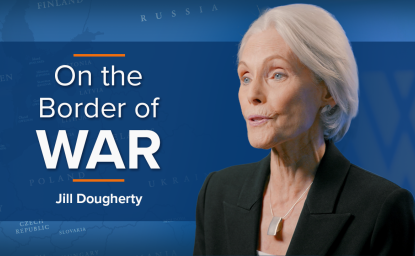"The size, scope, and complexity of 21st century problems dwarf the capabilities of institutions and programs invented in the 20th. In recent years, a broad, bi-partisan consensus has emerged that deep reforms are required in the structures and processes of government."
So says a new report, "The Promise of Public-Private Partnerships". It offers a bold challenge and opportunity for the next president.
The report is the product of the Forum on Privatization and Partnerships, a non-partisan group of government officials, business executives, and thought leaders convened in April 2008 by Wilson Center Senior Scholar Mahlon (Sandy) Apgar, IV, who was Assistant Secretary of the Army for Installations and Environment during the Clinton Administration. The Forum was co-hosted by the Wilson Center and the Urban Land Institute (ULI), with support from Jones Lang LaSalle.
In their preface, Lee Hamilton, president of the Wilson Center, and Richard Rosan, president of ULI, endorse the Forum's objective to produce a policy agenda for the next Administration, and "commend the report for consideration by the Presidential aspirants and their advisors."
"Partnerships with business change the way government works," Apgar says. "Partnerships are tools for harnessing the creative capabilities of business to achieve public goals. Working together, government and business achieve results that neither can achieve alone."
The report coins a term, "P2" (P-squared), to embrace conventional public-private partnerships and the military's unique housing privatization programs. It analyzes several successful P2 partnerships, notably the US Army's Residential Communities Initiative (RCI), begun during the Clinton Administration and enlarged during the Bush Administration. RCI has revolutionized the way the Army finances, designs, builds, and maintains housing for soldiers and their families. The Forum concludes that RCI has matured as a transformative, sustainable program because of its economic and operational logic, the determination of successive leaders through two Administrations, innovative mechanisms for oversight and execution, and the bipartisan, non-ideological support it has received from Congress. "RCI demonstrates how business can help government fulfill public needs and, in the process, produce innovations in the ways government meets those needs," Apgar says.
The Forum also introduces a "lifecycle analysis" model for federal property decisions. Applying this concept to an RCI-inspired P2 strategy for all Army's barracks would avoid $5 billion or more in future construction, operating and maintenance costs -- equivalent to providing 50,000 new Army barracks bedspaces. The Forum concludes that taxpayers could benefit by hundreds of billons of dollars from a P2 strategy applied to the $1.5 trillion federal property portfolio and the $2.7 trillion federal budget.
The report establishes five principles for effective P2 partnerships and proposes five actions for the next President: among them, create a Presidential Commission to identify partnership opportunities within the federal system and an Office of Public-Private Partnerships to make the case for P2s as an engine of social and institutional progress as well as economic growth. It also identifies applications throughout government -- housing, infrastructure, transportation, health care, education, federal buildings -- where partnerships could produce better results with significant cost savings.
The report concludes: "The promise of partnership is the promise of democratic capitalism itself -- the fusion of public purpose and private enterprise, sharing resources of money, talent, and property for community benefit, and rewarding those who put in the effort and take the risks."
Download the full report (PDF)
Related Links


